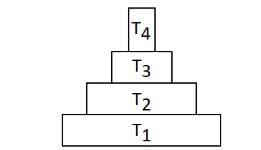31 Years NEET Previous Year Questions: Ecosystem - 1 - NEET MCQ
15 Questions MCQ Test - 31 Years NEET Previous Year Questions: Ecosystem - 1
In an ecosystem if the Net Primary Productivity (NPP) of first trophic level is  what would be the GPP (Gross Primary Productivity) of the third trophic level of the same ecosystem? (2024)
what would be the GPP (Gross Primary Productivity) of the third trophic level of the same ecosystem? (2024)
 what would be the GPP (Gross Primary Productivity) of the third trophic level of the same ecosystem? (2024)
what would be the GPP (Gross Primary Productivity) of the third trophic level of the same ecosystem? (2024)Identify the correct statements: (NEET 2023)
A. Detrivores perform fragmentation.
B. The humus is further degraded by some microbes during mineralization.
C. Water soluble inorganic nutrients go down into the soil and get precipitated by a process called leaching.
D. The detritus food chain begins with living organisms.
E. Earthworms break down detritus into smaller particles by a process called catabolism.
Choose the correct answer from the options given below:
B. The humus is further degraded by some microbes during mineralization.
C. Water soluble inorganic nutrients go down into the soil and get precipitated by a process called leaching.
D. The detritus food chain begins with living organisms.
E. Earthworms break down detritus into smaller particles by a process called catabolism.
In the equation GPP − R= NPP (NEET 2023)
GPP is Gross Primary Productivity
NPP is Net Primary Productivity
R here is ________.
Given below are two statements: (NEET 2022 Phase 1)
Statement I: Decomposition is a process in which the detritus is degraded into simpler substances by microbes.
Statement II: Decomposition is faster if the detritus is rich in lignin and chitin
In the light of the above statements, choose the correct answer from the options given below:
Detritivores breakdown detritus into smaller particles. This process is called: (NEET 2022 Phase 1)
The amount of biomass or organic matter produced per unit area over a time period by plants during photosynthesis is called (NEET 2022 Phase 2)
Given below are two statements
Statement I: The rate of decomposition is not related to chemical composition of detritus and climatic factors.
Statement II: In a particular climatic condition, decomposition rate is faster if detritus is rich in lignin and chitin.
In light of the above statements, choose the correct answer from the options given below:
In relation to Gross primary productivity and Net primary productivity of an ecosystem. Which one of the following statements is correct? [2020]
Consider the pyramid of energy of an ecosystem given below :

If T4 is equivalent to 1000 J, what is the value of T1?
Which ot the following ecological pyramids is generally inverted? [2019]
What type of ecological pyramid would be obtained with the following data? [2018)]
Secondary consumer : 120 g
Primary consumer : 60 g
Primary producer : 10 g
Vertical distribution of different species occupying different levels in a biotic community is known as: [2015 RS]
The mass of living material at a trophic level at a particular time is called: [2015 RS]
In an ecosystem the rate of production of organic matter during photosynthesis is termed as: [2015 RS]















